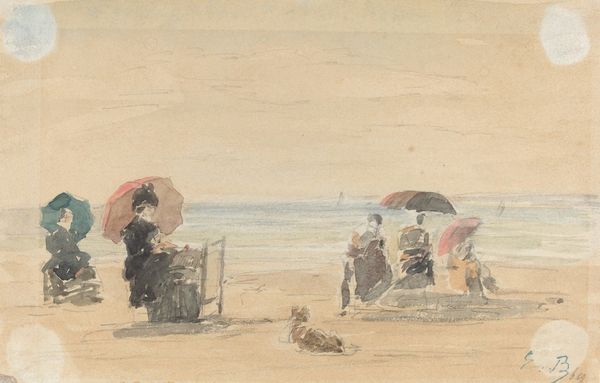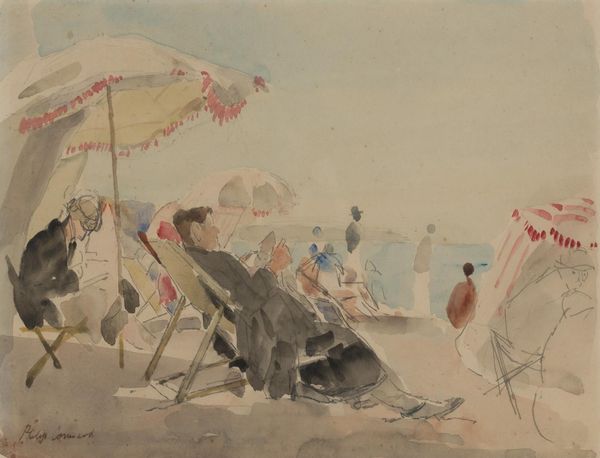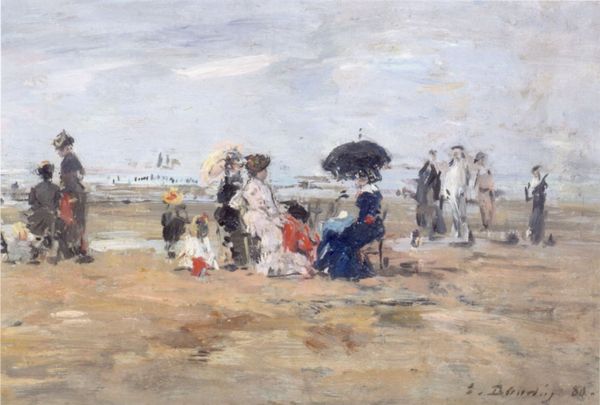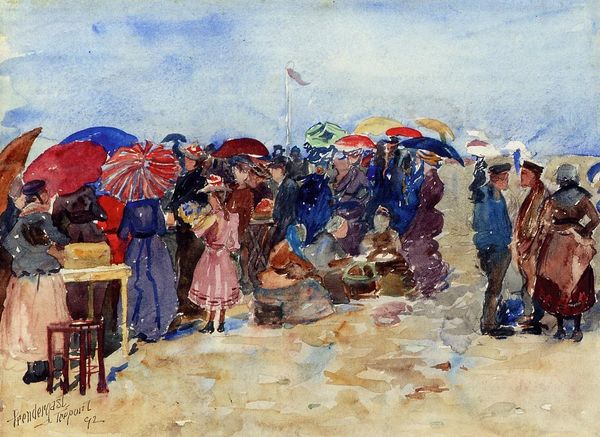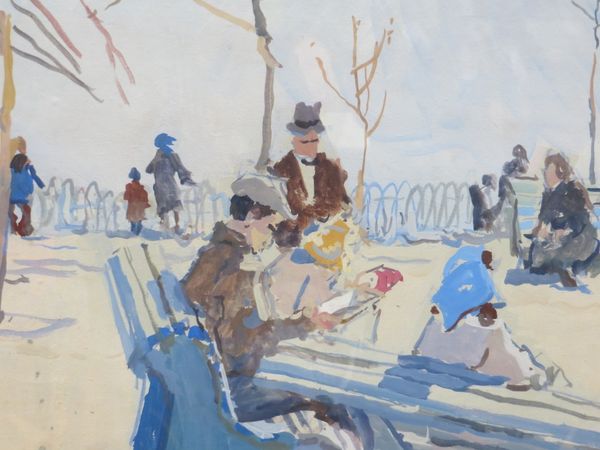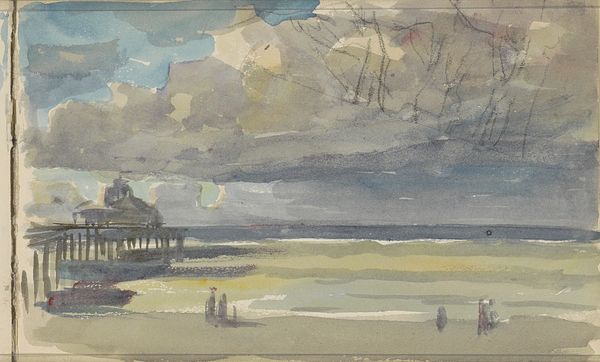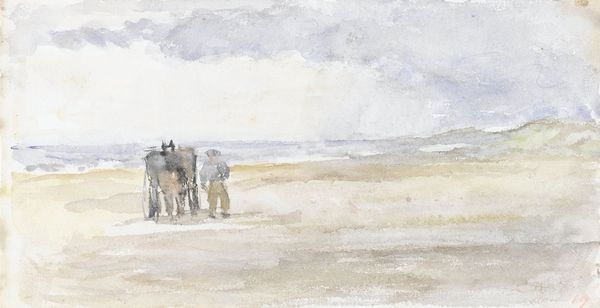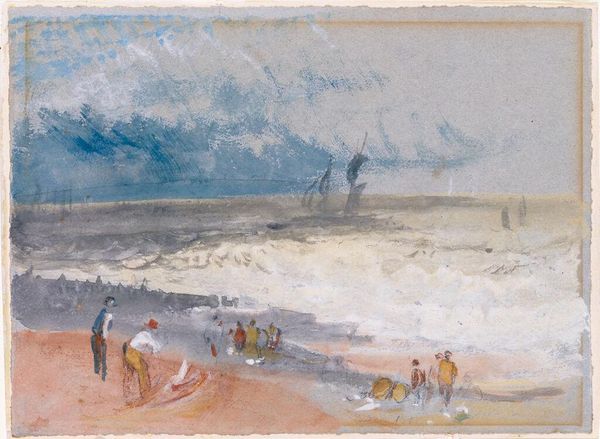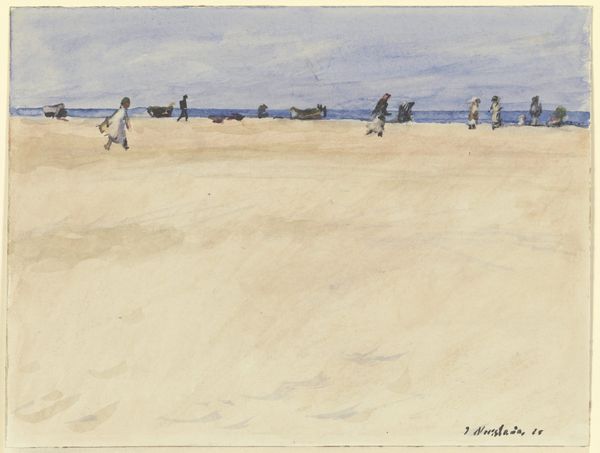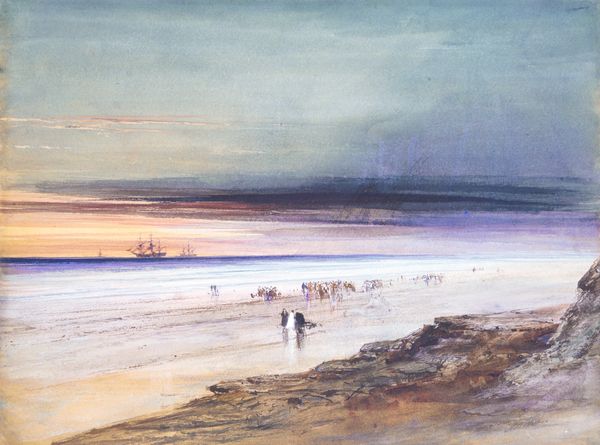
plein-air, watercolor
#
impressionism
#
plein-air
#
landscape
#
figuration
#
watercolor
#
underpainting
#
cityscape
#
genre-painting
#
watercolor
Copyright: Public domain
Eugène Boudin made this watercolour painting of Trouville beach. The artist's loose brushwork and diluted pigments evoke a fleeting moment, capturing the atmospheric conditions of the seaside. Watercolor, known for its transparency and fluidity, lends itself to this kind of atmospheric effect. It's a medium that favors spontaneity, with its unique blending capabilities, and subtle gradations of tone. Boudin’s choice of materials is interesting here, because his visible brushwork is also very economical. The subject matter also suggests a wider social context. Beach scenes were popular among Impressionist painters, as new railway lines enabled easier travel to coastal towns. The parasols and formal attire of the figures signal their bourgeois status. Leisure time became increasingly available to this class, which in turn fueled the development of seaside resorts like Trouville. By focusing on the materiality and the context of production, we can understand the full meaning of Boudin's artwork, while also considering the relationship between art, society, and leisure.
Comments
No comments
Be the first to comment and join the conversation on the ultimate creative platform.
